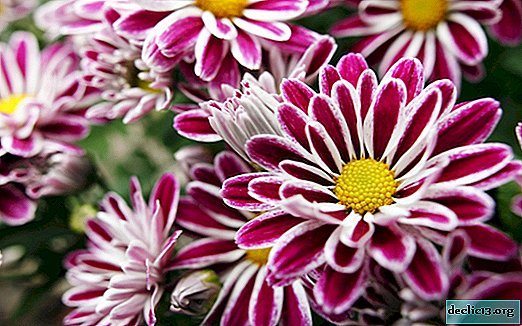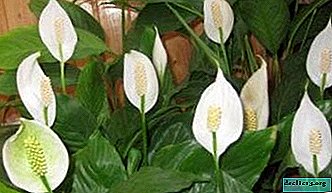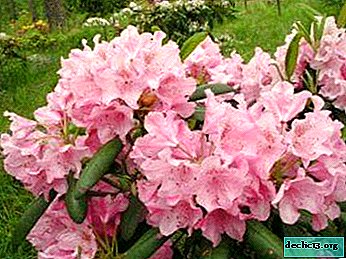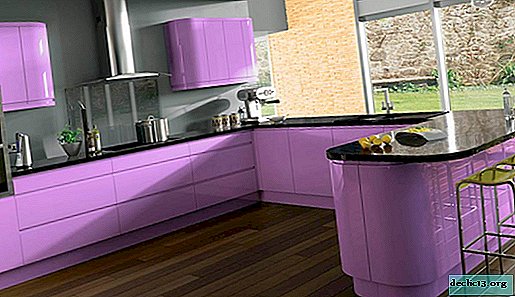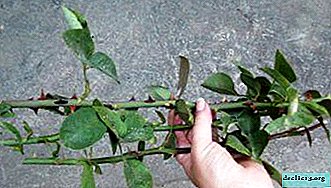Indoor flower violet Greenhouse effect and all about caring for her
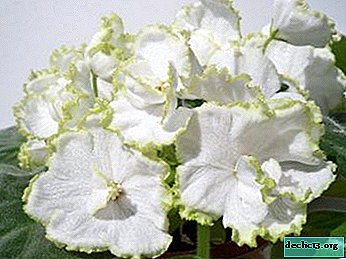
Violet is one of the most popular and unpretentious house plants.
The peculiarity of this flower is an unusually wide variety of varieties, each of which differs in its flower shape, color and color scheme.
Among the many varieties, the appearance of the Greenhouse effect is very prominent.
This plant is suitable for those who like bell-shaped flowers, as this variety is similar to large terry lilies of the valley.
General description of the variety
This plant is distinguished by lace flowers. They can be used not only to decorate the windowsill. A flower is perfect for creating an original composition on a kitchen apron or shelf. In addition, he will feel great even on the balcony, but only if he is insulated.
The variety is not picky in terms of care. It is very important for him to observe regular watering and proper lighting. Its flowering is long - 2-3 months.
In winter, the plant retires. At this time, only watering is important for him, so feeding is no longer necessary.When and how did it appear?
Variety Greenhouse effect was bred in 2008 in St. Petersburg by the Russian breeder K. Morev. It prompted him to this desire to create flowers in the form of a "lily of the valley" with an interesting color. Already this year, violet was made available for viewing at the exhibition.
Photo
Here you can see a photo of the plant.



Appearance
These are unusual white simple and semi-double bells, in which a corrugated green-brown edging. The foliage is medium green. The outlet is neat, but can take on large sizes. The shape of the flower is quite interesting.
Half-open, he resembles a lily of the valley with a bright green-brown edging. Petals grow together, forming water lilies. They are white. Anthers white-yellow. The size of the bells is average. There are situations when the branches do not keep the shape of a lily of the valley, but open up completely. Flowers have long been in the half-descent stage. On the peduncle 2-3 buds.
Peduncles are thin, they do not hold flowers, fall apart on different sides throughout the outlet. The leaves are medium in size, they have a light green color. A corrugated edging is present along the contour.
Distinctive Care Features
Location and lighting
 When caring for a variety of Greenhouse effect, it is very important to correctly determine the location of the flower. The variety is photophilous, diffused light is preferred for it, without direct sunlight. Contain a flower on the windowsill, whose windows face west or east.
When caring for a variety of Greenhouse effect, it is very important to correctly determine the location of the flower. The variety is photophilous, diffused light is preferred for it, without direct sunlight. Contain a flower on the windowsill, whose windows face west or east.
But to place a flower in the back of the room is not recommended, because due to a lack of light, plant growth will slow down and flowering will be absent.
Important! Growing a violet on the southern windows, it is necessary to shade it from the scorching day sun and put it on the table in front of the window.Watering
 In this regard, the Greenhouse effect variety is moody. Violet does not like too much watering, but it is unacceptable for it to dry out.
In this regard, the Greenhouse effect variety is moody. Violet does not like too much watering, but it is unacceptable for it to dry out.
Summer violets watered 1-2 times a week, and in winter - 1 time. To moisturize, it is best to use settled water, but rain can also be used. It should be soft and warm. Watering is carried out directly under the root.
Make sure that it does not fall on the flowers and growth points. This is fraught with decay of the leaves.
Top dressing
 Feed the plant only during its active flowering. In autumn and winter, the violet should not once again be overloaded with minerals, it is at this time at rest and rarely blooms.
Feed the plant only during its active flowering. In autumn and winter, the violet should not once again be overloaded with minerals, it is at this time at rest and rarely blooms.
Young plants require nitrogen top dressing for better growth. But apply them every week after watering and until the buds are formed. Adult violet prefers potassium-phosphorus compounds.
Planting and growing
The process of planting violets is a simple matter, then for a start it is necessary to prepare for it.
Soil composition
Before planting violets Greenhouse effect prepare the substrate. To do this, you need the following components:
- peat - 3 parts;
- sheet land - 5 parts;
- coarse river sand - 1 part;
- dried sphagnum moss and charcoal should be 10% of the total mass of the main components.
Capacities
 So that the soil does not sour and does not destroy the root system, it should not be much. For an adult flower, pick up a container whose diameter is 10 cm. In addition, fill it with ½ part drainage.
So that the soil does not sour and does not destroy the root system, it should not be much. For an adult flower, pick up a container whose diameter is 10 cm. In addition, fill it with ½ part drainage.
Violet The greenhouse effect will bloom only when the root system is completely filled with a pot of substrate. For growing, the diameter of the first container will be 6 cm. The drainage holes should be full. A violet transplant is performed every 3 years, while the capacity may remain the same.
Breeding
The process of propagating violets is simple. The most common method is cuttings. Moreover, cuttings can take root even if they are planted immediately in the soil, without growing roots. But it is better to place them in water first. Carefully plant leaves with roots, at an angle of 45 degrees. Next cover with something transparent. This provide a greenhouse effect. When all the preparatory activities are behind, you can go directly to the landing.
The procedure is as follows:
- Put a small drainage on the bottom of the tank. You can use tracing paper or small pebbles. This will prevent stagnation of water at the roots of the flower. because of this, the violet can begin to rot and die.
- To fill up the agreed soil mixture. Add to it 1 tbsp. superphosphate and wood ash.
- Plant the rooted cuttings in a pot and gently sprinkle with earth. Water carefully.
- Create a young plant full of growth conditions: temperature, lighting, fertilizer.
Pest and Disease Control
If all the rules are not observed when growing violets, the following pests and diseases can affect it:
- Powdery Mildew This is a fungal disease, which can be recognized by the presence of whitish spots on the leaves of the plant. You can fight it with the help of Fundazole.
- Late blight. This is a serious disease, during the development of which all affected plants must be removed and the pot disinfected. The disease can be propagated by the presence of brown spots on the foliage, as a result of which the root system rots.
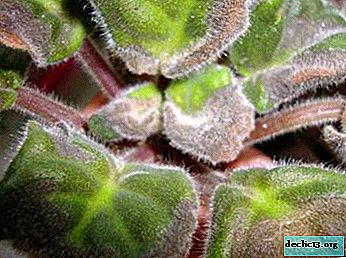 Gray rot. The main symptom of this disease is gray spots in any areas. As soon as they were discovered, remove their sase, and transplant the flower itself into a clean substrate. The plant itself is treated with a fungicide.
Gray rot. The main symptom of this disease is gray spots in any areas. As soon as they were discovered, remove their sase, and transplant the flower itself into a clean substrate. The plant itself is treated with a fungicide.- Rust. This is a disease that can be recognized by the presence of brownish-orange spots on the leaves. To combat the disease, use a weak solution of copper sulfate.
- Ticks These pests are frequent guests in violets. You can identify them by the presence of the web and track eaten out. Acaricide is used to process the plant.
- Shield. This pest can be recognized by specific wild spots on the leaves. Processing is carried out using Agravertin.
- Thrips. This parasite harms the entire plant. If thrips is found, you need to cut off all the flowers, and process the violet itself with Actara.
Violet The greenhouse effect is an ornamental plant that is valued for its unusual appearance. In terms of care, the flower is not picky, although it needs to follow simple agricultural rules. Growing this variety is so simple and easy, so even inexperienced growers can choose it.

 Gray rot. The main symptom of this disease is gray spots in any areas. As soon as they were discovered, remove their sase, and transplant the flower itself into a clean substrate. The plant itself is treated with a fungicide.
Gray rot. The main symptom of this disease is gray spots in any areas. As soon as they were discovered, remove their sase, and transplant the flower itself into a clean substrate. The plant itself is treated with a fungicide.
